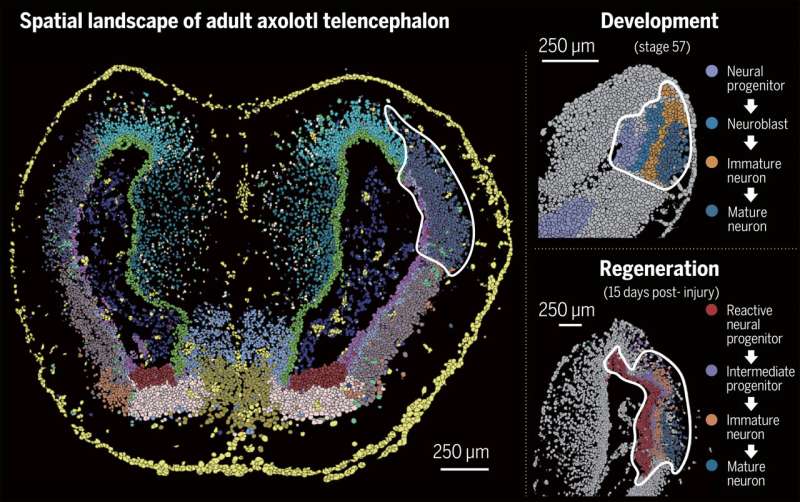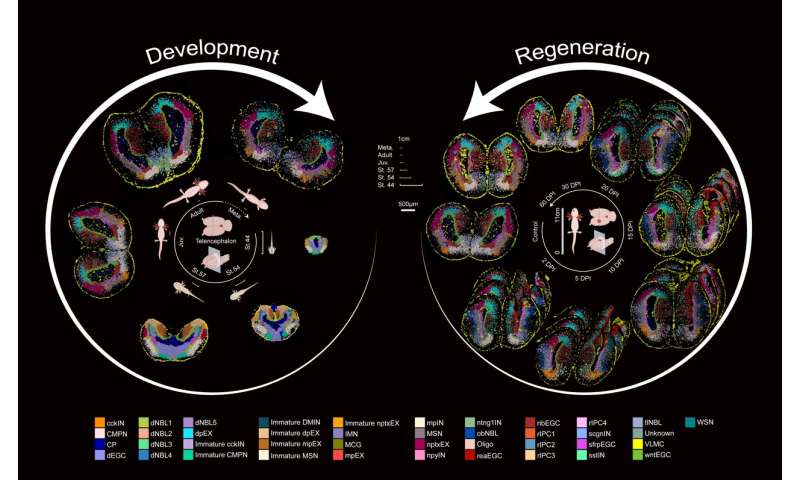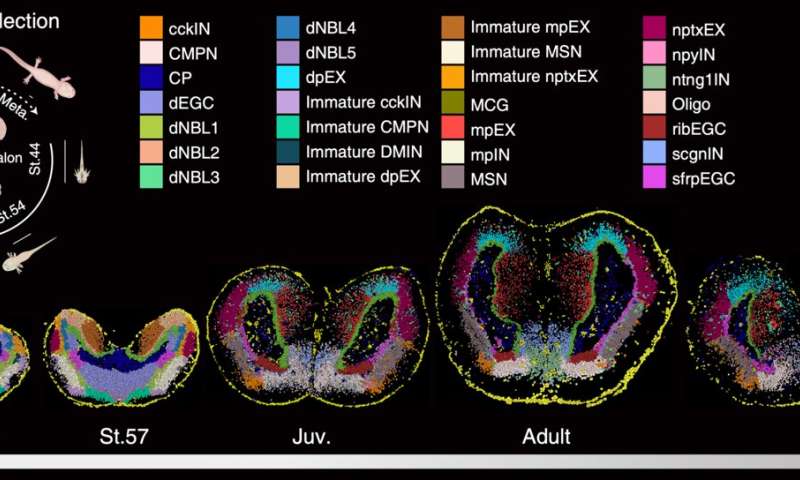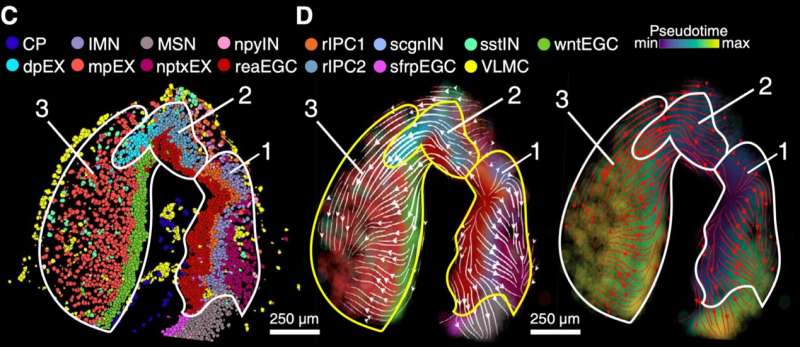The first spatiotemporal map of brain regeneration in the axolotl

A multi-institute research team led by BGI-Research has used BGI Stereo-seq technology to construct the world first spatiotemporal cellular atlas of the axolotl (Ambystoma mexicanum) brain development and regeneration, revealing how a brain injury can heal itself. The study was published as a cover story in the latest issue of Science.
The research team analyzed the development and regeneration of salamander brain, identified the key neural stem cell subsets in the process of salamander brain regeneration, and described the reconstruction of damaged neurons by such stem cell subsets. At the same time, the team also found that brain regeneration and development have certain similarities, providing assistance for cognitive brain structure and development, while offering new directions for regenerative medicine research and treatment of the nervous system.
In contrast to mammals, some vertebrates have the ability to regenerate multiple organs, including parts of the central nervous system. Among them, the axolotl can not only regenerate organs such as limbs, tail, eyes, skin and liver, but also the brain. The axolotl is evolutionarily advanced compared to other teleost, such as zebrafish, and its brain features a higher similarity to mammalian brain structure. Therefore, this study used the axolotl as an ideal model organism for research into brain regeneration.
Previous research has only partially characterized which cells and pathways are involved in brain regeneration. In this study, researchers used BGI's Stereo-seq technology to create a single-cell resolution spatiotemporal map of salamander brain development over six important developmental periods, showing the molecular characteristics of various neurons and dynamic changes in spatial distribution. Researchers found that neural stem cell subtypes located in the ventricular zone region in the early stage of development are difficult to distinguish, but began to specialize with spatial regional characteristics from the adolescent stage. This discovery suggests different subtypes may undertake different functions during regeneration.
By sampling the brain at seven time points (2, 5, 10, 15, 20, 30 and 60 days) following an injury to the cortical area of the salamander brain, the researchers were able to analyze cell regeneration.
In the early stage of injury, new neural stem cell subtypes began to appear in the wound area, and partial tissue connections appeared in the injured area on day 15. On days 20 and 30, researchers observed that the wound had been filled with new tissues, but the cell composition was significantly different from the non-injured area. By day 60, the cell types and distribution had returned to the same status as the non-injured area.
-

Axolotl brain developmental and regeneration processes. Credit: BGI Genomics -

Spatial and temporal distribution of axolotl brain development. Credit: BGI Genomics
By comparing the molecular change during the development and regeneration of the salamander brain, researchers found that the formation process of neurons is highly similar during both development and regeneration. This result indicates that brain injury may induce neural stem cells to reversely transform into an early developmental state to initiate the regeneration process.
"Using axolotl as a model organism, we have identified key cell types in the process of brain regeneration. This discovery will provide new ideas and guidance for regenerative medicine in the mammalian nervous system," explained Dr. Yin Gu, joint corresponding author of the paper, Deputy Director of BGI-Research.
"The brain is a complex organ with interconnected neurons. Therefore, a major goal in central nervous system regenerative medicine is not only to reconstruct the spatial structure of neurons, but also to reconstruct the specific patterns of their intra-tissue connections. Therefore, it is important to reconstruct the 3D structure of the brain and understand the systemic reactions between brain regions during regeneration in future research."

In addition to BGI, researchers from China, the United States, and Denmark, including Guangdong Provincial People's Hospital, South China Normal University, Wuhan University, School of Life Sciences at University of Chinese Academy of Sciences, Shenzhen Bay Laboratory, Whitehead Institute, University of Copenhagen, and other institutes participated in this study which received ethical approval and used laboratory-grown axolotl.
More information: Xiaoyu Wei et al, Single-cell Stereo-seq reveals induced progenitor cells involved in axolotl brain regeneration, Science (2022). DOI: 10.1126/science.abp9444
Journal information: Science
Provided by BGI Group




















